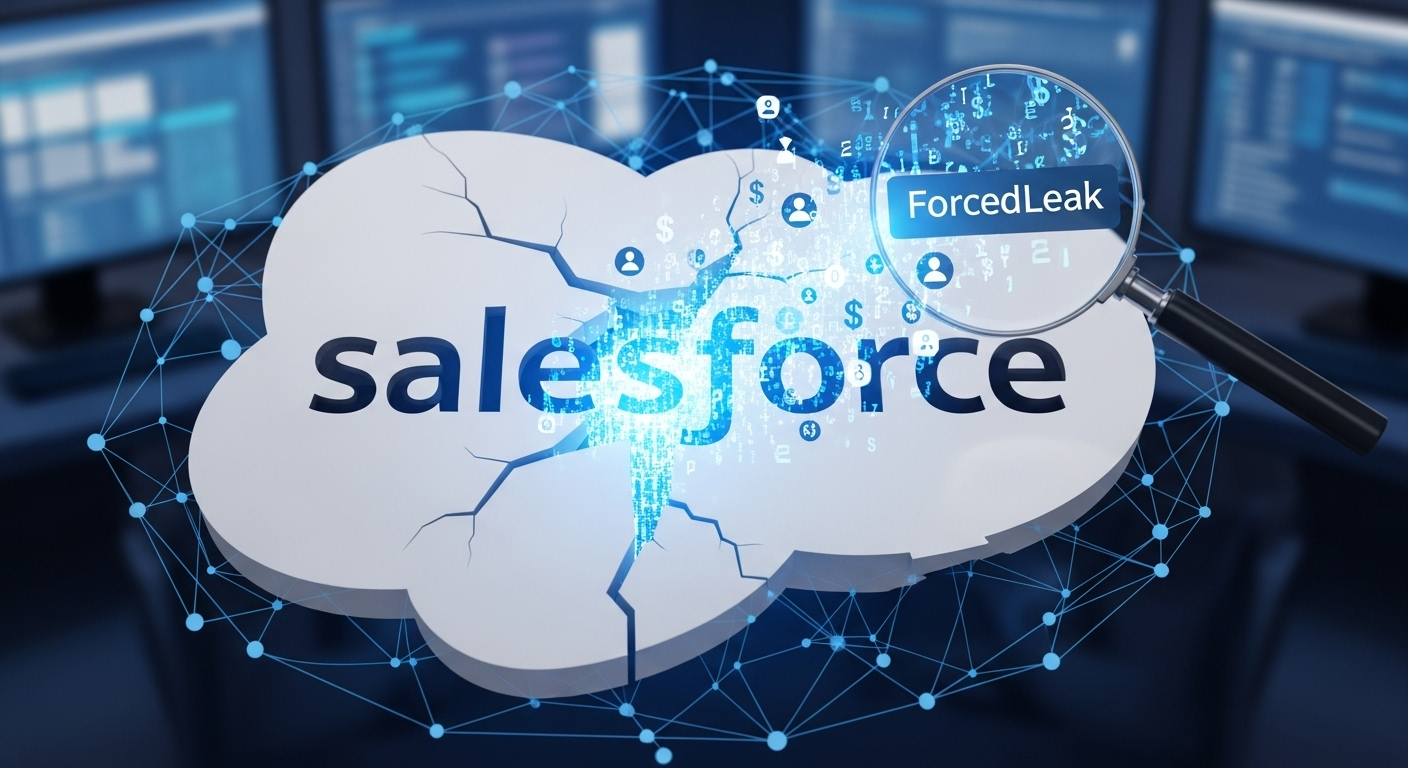
Salesforce, a leading provider of CRM solutions, recently addressed a critical vulnerability dubbed “ForcedLeak.” This wasn’t a minor issue; it exposed sensitive customer relationship management (CRM) data to potential theft, serving as a stark reminder of the evolving cybersecurity landscape in our AI-driven world. This incident demands attention. As someone with experience in cybersecurity, I can confirm this is a significant event.
ForcedLeak: A Deep Dive
The ForcedLeak vulnerability targeted Salesforce’s Agentforce platform. Agentforce is designed to build AI agents that integrate with various Salesforce functions, automating tasks and improving efficiency. The attack leveraged a technique called indirect prompt injection. In essence, attackers could insert malicious instructions within the “Description” field of a Web-to-Lead form. When an employee processed the lead, the Agentforce executed these hidden commands, potentially leading to data leakage.
Here’s a breakdown of the attack process:
- Malicious Input: An attacker submits a Web-to-Lead form with a compromised “Description.”
- AI Query: An internal employee processes the lead.
- Agentforce Execution: Agentforce executes both legitimate and malicious instructions.
- CRM Query: The system queries the CRM for sensitive lead information.
- Data Exfiltration: The stolen data is transmitted to an attacker-controlled domain.
What made this particularly concerning was the attacker’s ability to direct the stolen data to an expired Salesforce-related domain they controlled. According to The Hacker News, the domain could be acquired for as little as $5. This low barrier to entry highlights the potential for widespread damage if the vulnerability had gone unaddressed.
AI and the Expanding Attack Surface
The ForcedLeak incident is a critical lesson, extending beyond just Salesforce. It underscores how AI agents are creating a fundamentally different attack surface for businesses. As Sasi Levi, a security research lead at Noma, aptly noted, “This vulnerability demonstrates how AI agents present a fundamentally different and expanded attack surface compared to traditional prompt-response systems.” As AI becomes more deeply integrated into daily business operations, the need for proactive security measures will only intensify.
Protecting Your Data: Proactive Steps
Salesforce responded decisively by re-securing the expired domain and enforcing a URL allowlist. However, businesses must adopt additional proactive measures to mitigate risks:
- Audit existing lead data: Scrutinize submissions for any suspicious activity.
- Implement strict input validation: Never trust data from untrusted sources.
- Sanitize data from untrusted sources: Thoroughly clean any potentially compromised data.
The Future of AI Security
The ForcedLeak incident serves as a critical reminder of the importance of proactively addressing AI-specific vulnerabilities. Continuous monitoring, rigorous testing, and a proactive security posture are essential. We must prioritize security in our AI implementations, using trusted sources, input validation, and output filtering. This is a learning experience that requires constant vigilance, adaptation, and continuous learning. Let’s ensure this incident is not forgotten, shaping a more secure future for AI.